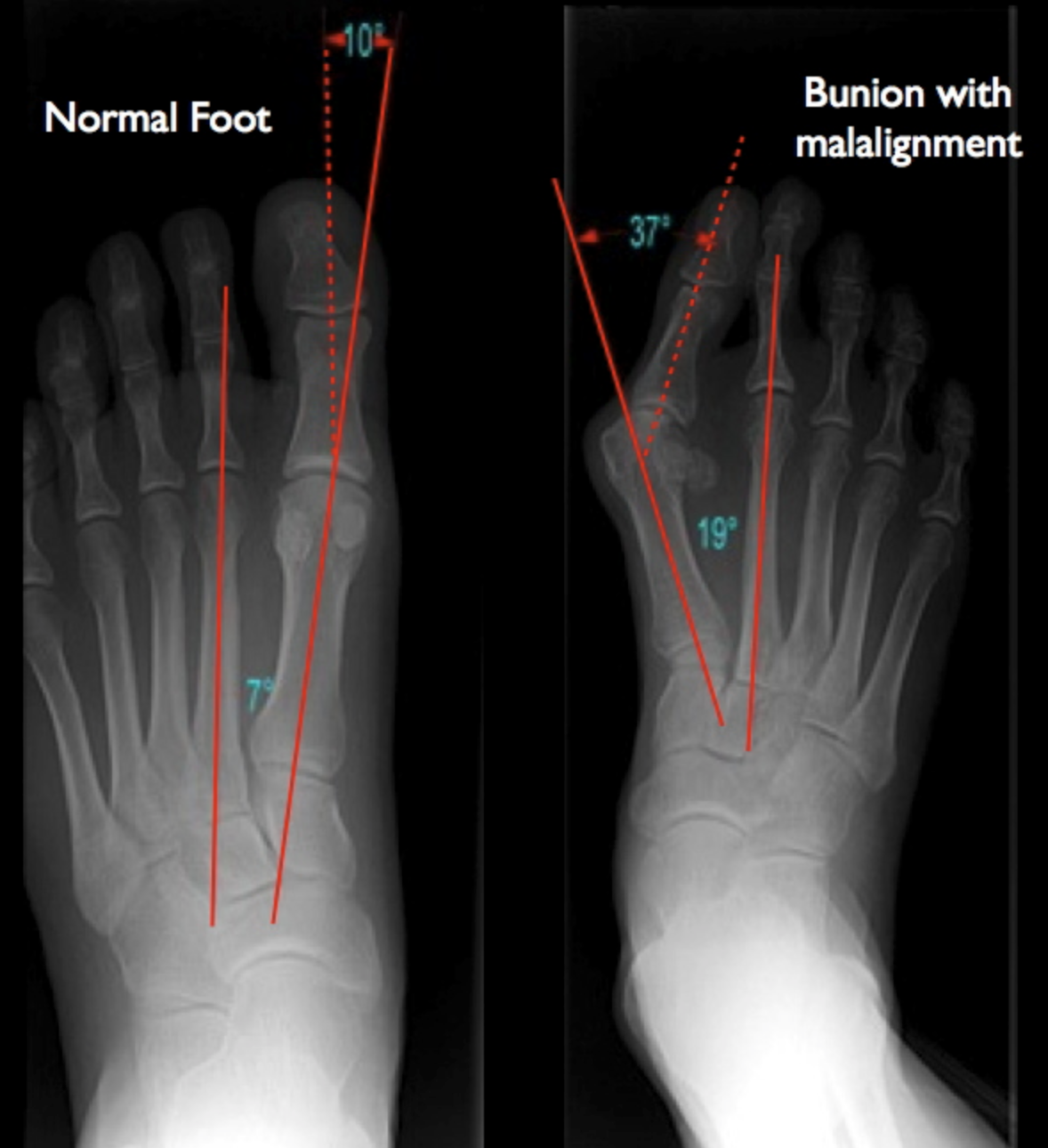How To Manage Your Bunion
Managing the most common foot disorder
What is a bunion?
Bunions are one of the most common disorders of the foot. The symptoms include pain when wearing shoes, a large protruding bone on the inside of the foot, and sometimes numbness in the big toe. A common misconception about bunions is they are a boney growth on the inside of the foot. However, as a matter of fact, bunions are a malalignment of the metatarsal in the foot. The X-rays below show a normal foot compared to a bunion malalignment.
Why do bunions develop?
Several theories have been proposed on bunion formation. In most cases, bunions form due to poor footwear, which is referred to as an acquired bunion. Approximately 90% of bunion surgeries are performed on women because of their affinity for heels and tight-fitting footwear.
The second formation of bunions is based on hereditary factors. Individuals with low arches and flat feet are more prone to bunion formation. Hereditary bunions run in families, and they usually manifest in teenage years and worsen throughout adulthood.
Treating my bunion
The treatment of a bunion is to relieve pain, not for a cosmetic deformity. If a bunion is not painful, there is no reason to have a surgery to correct it. First, someone should try wearing shoes with a wide toe base to minimize pressure over the bunion. Then, if and only if this doesn’t help, surgery can be considered.
Bunion surgery is performed by making an incision through the skin and muscle tissue to the metatarsal bone. In turn, the tendons are divided, and the protruding edge of the bone resected. After the bone is separated, the metatarsal is realigned to the big toe and secured with a screw.
After surgery, follow-up appointments are essential for a successful recovery. At follow-up appointments, the surgeon will inspect the incisions and re-wrap the foot. The most important aspect of a follow-up is to ensure the toe and metatarsal are kept in proper alignment. The surgeon will place the patient in a bunion shoe for walking during the 8-week healing period, which protects the progress made from the surgery.
If you are suffering from a bunion, get in touch with Direct Orthopedic Care (DOC). We are open 7 days a week until 8 PM.


